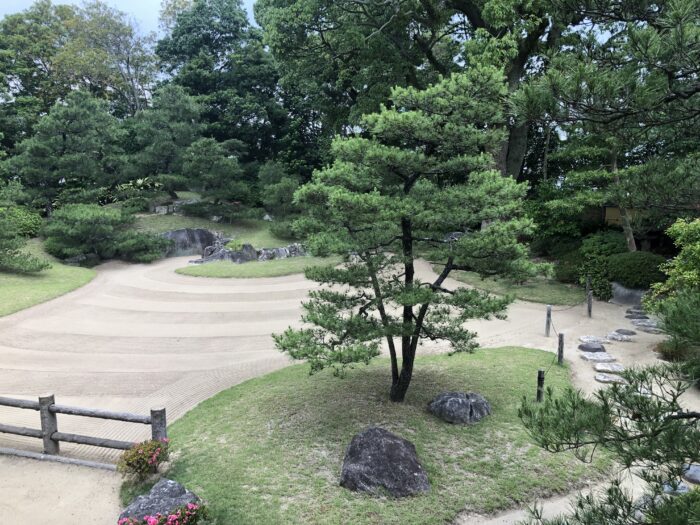
I’ve been traveling again, and today’s blog is the first of a series about my visit to Japan. Japan brings many images to mind, from theserenity of a Zen garden to the frenetic pace of traffic in Tokyo.

I traveled mostly by ship, beginning my journey in Kyoto and continuing up the western coast of Japan as far as Hokkaido. I tend to approach my travels in date order, but this series is by topic. And what better place to start than the cultural experiences that gave me the greatest “wow” factor. All are rooted in traditional arts, and performed in contemporary context.
Taiko Drumming
Japan is well-known for its Taiko Drums and drummers. The phrase Taiko Drum is technically repetitious since taiko means a drum of any kind, though we often think about the term as synchronized drumming performances.
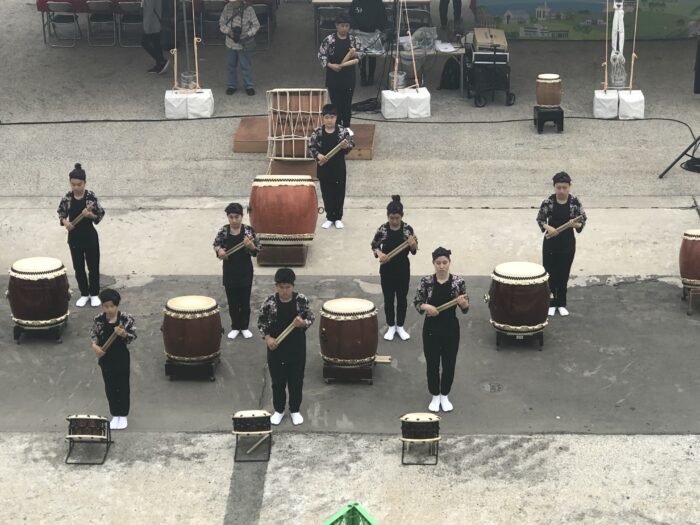
Dockside at Karatsu, I saw my first drummers — students from middle school and high school. Their discipline and enthusiasm resulted in a stellar performance.
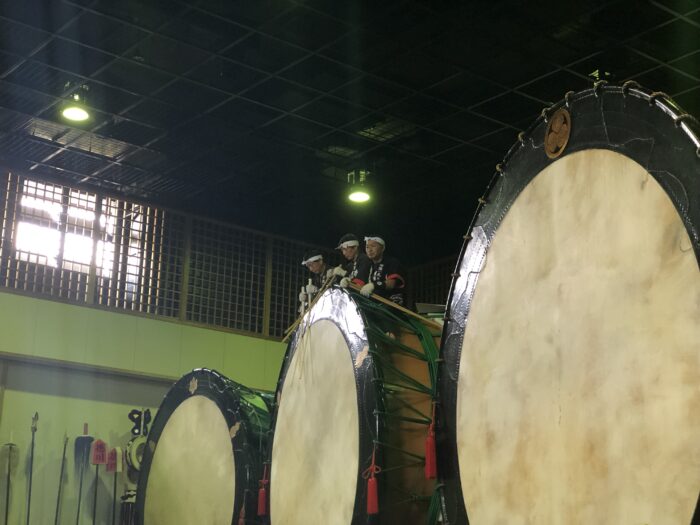
The Odaiko no Yakata (Big Drum Museum) in Akita Prefecture houses an entire collection of drums from around the world, but the best exhibit is the Tsuzureko Odaiko (Giant Drum) which is listed in the Guinness Book of World Records as the world’s largest drum. It is 10.6 feet in diameter, 12.34 feet long, and weighs about 4 tons. Some drummers strike the drum from the floor; others climb a ladder to the top of the drum and lean over to strike the surface. Technically, there is a drum larger than the record holder, with a diameter of 10.8 feet. The drum surface is made from the skin of a single ox, which may limit the final diameter.
These large drums are the result of a 700 year competition between two neighborhoods in Takanosu: Uemachi and Shitamachi. When the competition began, farmers depended completely on rainfall to water their crops. There was an annual festival in which people prayed for rain, and since drums can sound like rolling thunder, the instrument became an important part of the festival.
Kodo drummers based on Sado Island are among the most famous taiko drummers. The term kodo has two meanings. The first is heartbeat; the second, children of the drum. The 30 minute performance we attended was mesmerizing. Unfortunately no pictures were allowed, but I found this 13 minute clip that gives a small sample.
Miyabiya Super Kabuki
At Kanazawa we were treated to Super Kabuki by Miyabiya. Kabuki is a traditional art form of dance and drama. The actors in Miyabiya give tradition a modern twist with lighting and extravagant drama.
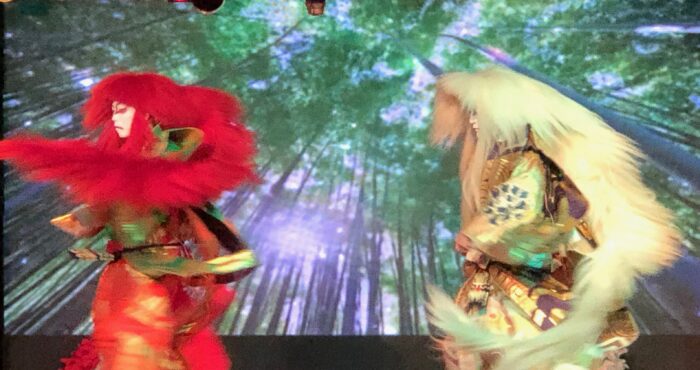
I wasn’t in a good position for photos, but found a clip showing the same story performed for us. The story is about a father lion and his cub. The father disciplines his son by throwing him over the edge of a ravine and waiting for the cub to climb back up. Our performance concluded with a light show, including lights. embedded in the actors’ wigs. If you watch the clip, keep your eye on what happens in front of the stage. Also, at the beginning, the screen goes black. Wait a couple minutes for it to come back.
Bunraku Puppets
Today’s last cultural gem is Bunraku puppetry, traditional Japanese puppet theater, sometimes called ningyo joruri. Its origins are about ten years before kabuki. We attended a performance by Yoyo Kaku. Each puppet has three puppeteers dressed in black. There is one narrator for all the characters, and music is provided by shamisen musicians.
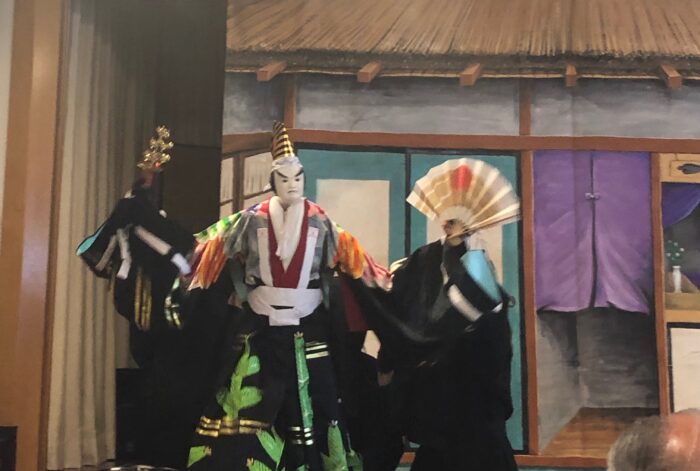
The story we saw is a scene from a popular tragedy: A Young Pilgrim Otsuru. The story is about a samurai’s quest to recover a sword stolen from his master. Jurobi and his wife Oyumi leave their small daughter Otsuru with her grandmother and travel from Awa to Osaka where they join a band of thieves.
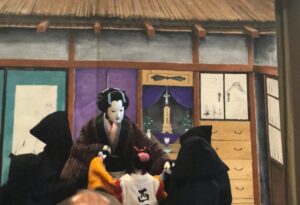
Many years later, as Oyumi is packing to move, there is a knock at the door. When Oyumi opens the door, she sees a young girl dressed as a pilgrim. As they talk, the girl reveals she is searching for her parents, and Oyumi realizes the pilgrim is her daughter. She gives Otsuru a silver coin and sends her away.
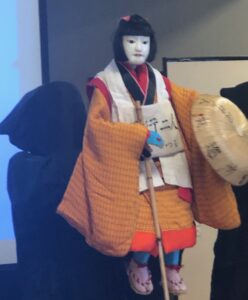
Spoiler Alert: The end of the story is not a happy one. Jurobi sees the pilgrim girl on the road, and in a struggle to steal her coin, Jurobi kills her.
???
Photos by Author

Sandra Wagner-Wright holds the doctoral degree in history and taught women’s and global history at the University of Hawai`i. Sandra travels for her research, most recently to Salem, Massachusetts, the setting of her new Salem Stories series. She also enjoys traveling for new experiences. Recent trips include Antarctica and a river cruise on the Rhine from Amsterdam to Basel.
Sandra particularly likes writing about strong women who make a difference. She lives in Hilo, Hawai`i with her family and writes a blog relating to history, travel, and the idiosyncrasies of life.

